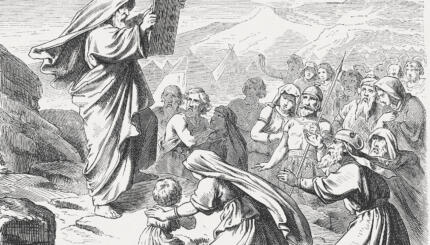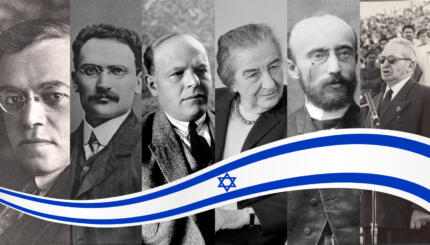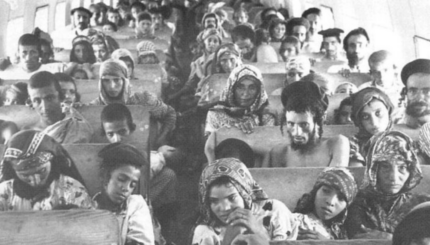Reprinted with permission from the AVI CHAI Bookshelf, where birthright israel alumni can order free books and periodicals.
In his acceptance speech upon receiving the Nobel Prize in literature, S. Y. Agnon (1888-1970), one of the most prolific and celebrated Hebrew authors of the 20th century, offered some insights into his enigmatic life and work. In his life and work, truth bleeds into fiction, making the two indistinguishable.
From the Pious to the Profane
The writer is known for his short stories, novellas and novels, written in a variety of styles ranging from pious folk tales and gothic romances to psychological dramas. Agnon claimed that his inspirations were “first and foremost the sacred scriptures, and after that, the teachings of the medieval Jewish sages, and the spectacles of nature and the animals of the earth.”
This image of himself as a pious and parochial Jew is central to the identity he constructs of himself as the modern Jewish writer. He is able to present himself as the writer of his people by conflating in his fiction aspects of his own biography with the history of the Jewish people.

Help us keep Jewish knowledge accessible to millions of people around the world.
Your donation to My Jewish Learning fuels endless journeys of Jewish discovery. With your help, My Jewish Learning can continue to provide nonstop opportunities for learning, connection and growth.
For instance, he claims that he was born on the Ninth of Av, the date that marks the destruction of both Temples, as well as the alleged date on which the future messiah will be born. Likewise, he links the two times his house burned down, once in Homburg, Germany, in 1924 and the second time in Jerusalem in 1929, with the destruction of the two Temples. He also acknowledges that his first immigration to Israel in 1907 occurred on Lag B’Omer, the day that commemorates Bar Kokhba’s rebellion against the Romans in the land of Israel.
The very name “Agnon” is a literary construction intended to tie his fate to that of the Jewish people. Born as Shmuel Yosef Czaczkes, he adopted his surname and nom de plume from his first story published in the Land of Israel entitled “Agunot.” The name derives from the status of abandoned women in Jewish law. These women have been abandoned by their legal husbands and left without a writ of divorce. Without this document, these agunot are in a state of limbo, belonging neither to the world of the married or of the single. And as the literal meaning of the name implies, they are chained to this infuriating status.
Trapped Between Worlds, Belonging to Neither
In many ways, Agnon sees himself in a similar position–trapped between different worlds but belonging to neither–and his literature plays on these themes. The sense of longing becomes the impetus and source of Agnon’s writing itself, since it is through the very act of writing that Agnon attempts to alleviate the collective desire for fulfillment and the fractured existence of the Jewish people.
The connection between autobiography and fiction or myth is also evident in the many quasi-autobiographical details found in his writing. The town in which he was born, Buczacz, located in eastern Galicia, appears in many of his stories under the anagrammatic name Szybusz. The fictionalized name, which literally means “error” in Hebrew, comes to represent the mythical shtetl landscape that serves as the backdrop for many of the stories taking place in the Diaspora. There are also traces in his fiction of other countries and towns in which he lived. After leaving Poland he immigrated to Palestine, and then returned to Europe six years later to live in Germany. Following the destruction of his house in Homburg by fire, he returned to Palestine in 1924. These different places appear in his fiction, along with many historical Zionist and socialist figures, and people he met in his travels.
The traditional education he received as a child in the heder (a traditional Jewish school) is apparent in his work, as is his parents’ rich and diverse Jewish background. While his father’s family was connected to famous Hasidim, his mother came from a family of Mitnagdim, whose rationalism opposed the emotive mysticism of the Hasidim. Agnon’s writing reflects a unique synthesis of these two disparate worldviews.
A Unique Synthesis
In addition to the many Jewish worlds he occupied, Agnon’s writing also reflects a unique synthesis of Jewish tradition and German philosophy and literature, as he was also schooled in German as a child. However, his deployment of allusions from world literature, frequently play with the original meaning of the traditional texts producing an almost bitter irony that subverts Jewish tradition from within.
What makes Agnon’s writing treasured and unique is simultaneously what makes reading his stories so challenging for the modern reader. While he is well known and admired in Israel, he is virtually unknown to those outside the circle of Hebrew literature. One reason for this is the difficulty of translating his work. Whereas many aspects of social critique and psychological realism come through in translation, the allusivity of the text, which is embedded with wordplays, acrostics and anagrams, is sometimes obscured when the Hebrew text is translated.
Agnon’s language also poses a challenge to the modern Israeli Hebrew reader, who typically does not share Agnon’s encyclopedic knowledge of traditional literature. The language he employs is sometimes referred to as “Agnonit” instead of “Ivrit” (Hebrew), due to the foreignness and uniqueness of his idiom.
Agnon’s writing has exerted a great influence on contemporary authors such as A. B. Yehoshua, Appelfeld and Amichai’s prose. And his acceptance of the Nobel Prize in literature spoke not only to the universality of his writing, but also announced the entrance of Hebrew literature onto the world stage.
Agnon died in 1970, and has become an Israeli icon. Agnon’s house in Talpiyot, a neighborhood in Jerusalem, is a tourist site today. One can visit the lectern at which he stood when he wrote his stories, as well as the many volumes of Jewish and world literature on his shelves. His life and work has become symbolic of the hopes and longing of the Jewish state, a state that is at once ancient and modern. And as Agnon’s literature so eloquently expresses, it is a state still caught between different worlds, in some ways belonging to neither.


